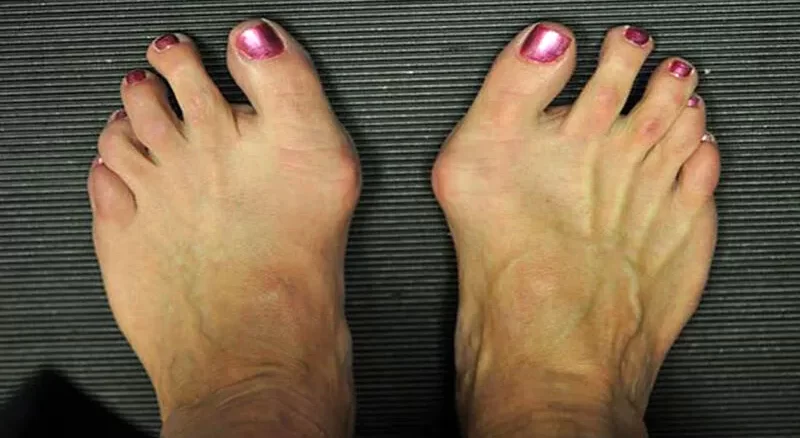The hump of the big toe is a bump on the side of the big toe, but in fact, this visible bump indicates important changes in the bone structure of the front part of the foot. The big toe hump is also known as hallux valgus, bunion deformity, and big toe deviation.
In the following, we will examine everything you need to know about the big toe’s bunion, crooked big toe treatment, and the new hallux valgus surgery method.
What is a bunion deformity?
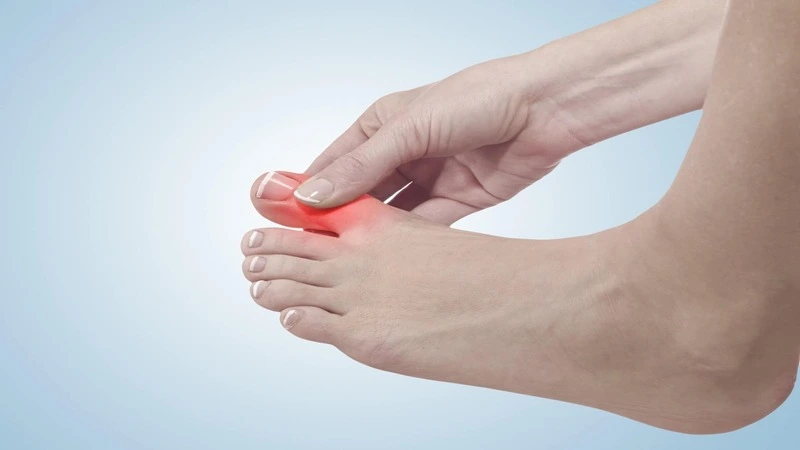
A bunion is a bony protrusion that appears on the joint at the base of the big toe. This condition occurs when the big toe pushes the side toe inward and causes the joint of this part to become larger and protrude. The skin over the bunion is red and inflamed. So, when you see this deformity, you should see a doctor immediately. If you live in Dubai, we advise you to immediately go for treatment for bunion deformity in Dubai.
Wearing tight shoes can cause or worsen bunions. In addition, other factors such as hereditary structural defects, pressure on the foot, or some diseases such as arthritis cause bunions. Smaller bunions, called bunionettes, appear on the joint of the little toe.
✔️ Read More: Ankle Arthritis; From Diagnosis to Treatment
The cause of bunion deformity
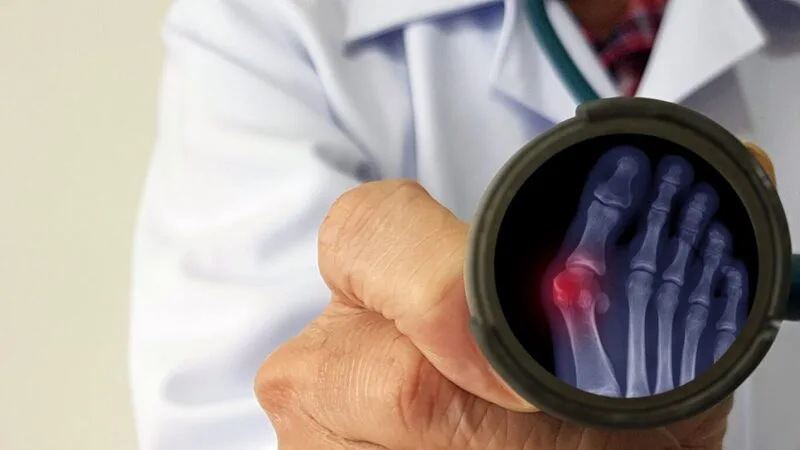
The symptoms of bunion deformity include:
- A bump on the outside of the base of the big toe
- Inflammation, redness, or soreness around the big toe
- Calluses or thickening of the skin – this problem often occurs where the first and second toes overlap
- Constant or intermittent pain
- Limited range of motion of the big toe (if arthritis affects the toe.)
- Pain in the soles of the feet may be permanent or occasional
- Difficulty moving your big toe
If you see such factors, immediately discuss this issue with your doctor or visit an ankle surgeon.
Who gets a bunion deformity?
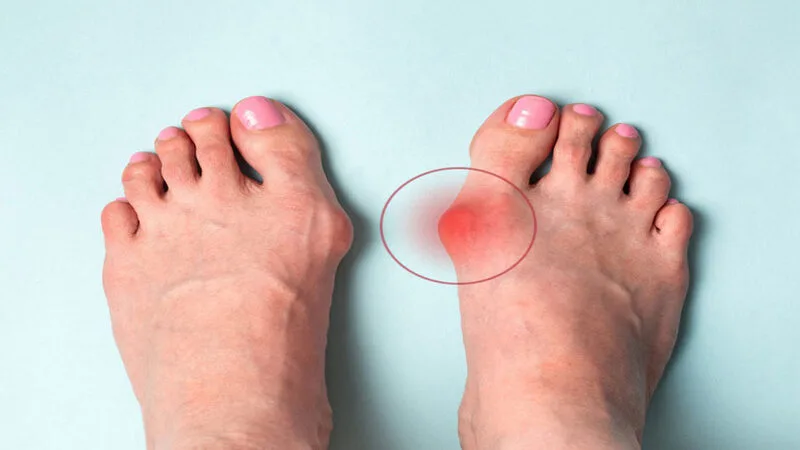
Anyone can get a bunion deformity. But this problem is more common among women. Also, people who have flat soles are more likely to suffer from big toe deviation due to the change in their feet due to deviation.
There is also a problem called adolescent deviance, which occurs mostly in girls between the ages of 10 and 15. People who suffer from foot diseases should immediately take action for the treatment of hammer toe.
Read More: What is the Sesamoid Bone? How to Treat it?
Risk factors in a bunion deformity
Factors that affect bunion deformity include:
High heel shoes
Wearing high heels pushes your toe toward the front of the shoe and often compresses your big toe.
Inappropriate shoes
People who wear shoes that are too stiff, too tight, or too pointy are more prone to developing a bunion.
Rheumatoid Arthritis
Having this inflammatory disease can make you susceptible to hallux valgus.
Inheritance
The possibility of developing a deviation may be due to the type of foot structure that a person has inherited.
Read More: Why Does the Knee Make Noise? Is the Knee Noise Dangerous?
When should you see a doctor for a bunion deformity?
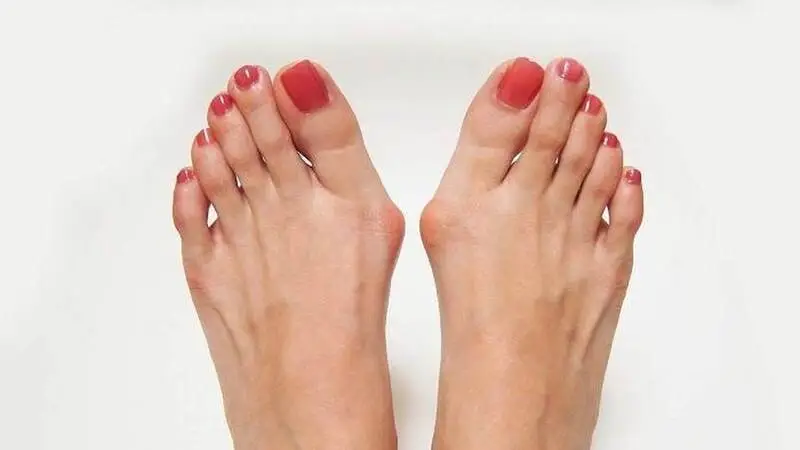
Although a bunion deformity does not require medical treatment, see a doctor if any of the following occurs:
- Persistent pain in the foot or the big toe
- A visible bump on the big toe’s joint
- Decreased range of motion of the big toe or the whole foot.
- Difficulty finding the right shoes due to bunions
Prevention of bunion deformity
To help prevent bunions:
Choose your shoes carefully. Shoes should have ample pressure for the big toe. Pointed shoes are unsuitable, and there should be space between your longest toe and the tip of the shoe.
Your shoe should fit the shape of your foot without squeezing or putting pressure on any part of your foot.
Read More: What Is Blunt’s Disease? Symptoms and Treatment Methods
Complications caused by a bunion deformity
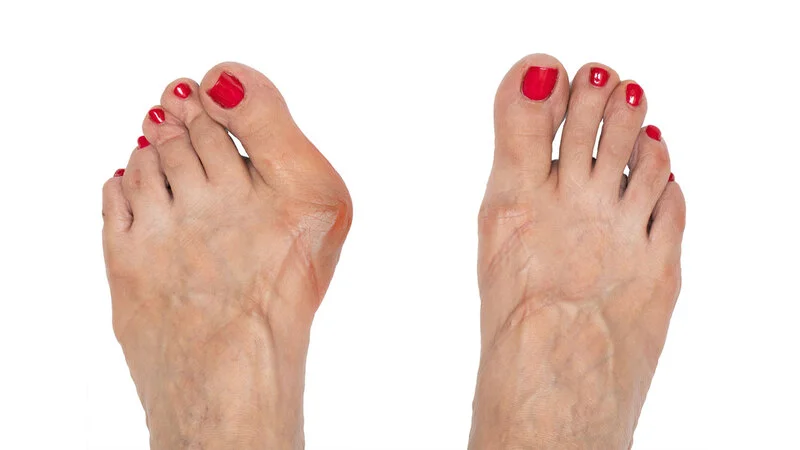
An untreated sprain can irritate a fluid-filled sac in the joint called a bursa. This position causes swelling and inflammation of the bursa, which causes pain and tenderness and may limit movement in other joints of the foot. This problem is known as bursitis.
Other possible complications of deviation may include the following:
- Bad foot or big toe
- Big toe stiffness
- Chronic foot or big toe pain
If you experience these symptoms, or if you have diabetes or any signs of infection, call your doctor right away.
Diagnosis of bunion deformity
In general, it is enough to observe the foot to detect a bunion, as the bump is visible on the lateral side of the big toe. However, your doctor may order an X-ray to see how much deformity there is in the soles of your feet.
Read More: What Is a Heel Spur? The Cause of the Disease and Its Treatment Methods
Bunion deformity treatment
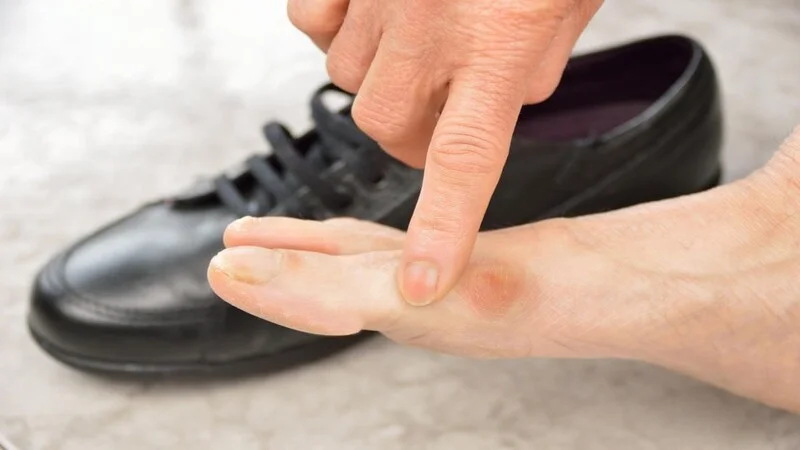
Hallux valgus has different stages, and for each stage of the disease, a special treatment method is considered.
Treatment of bunion deformity without surgery
Non-surgical treatments for bunion deformity may include:
- Wearing suitable shoes that have enough space for the thumb.
- Use ice to relieve pain and inflammation
- Draw shoes professionally to make them bigger
- Use of custom orthotic devices
- Placing a hallux valgus pad on the affected area to reduce pain
- Avoid activities that cause pain, such as standing on your feet for long periods.
- Using over-the-counter pain relievers when needed, such as acetaminophen or non-steroidal anti-inflammatory drugs
Treatment of hallux valgus with laser
Non-surgical treatments may include custom orthotics, orthopedic shoes, physical therapy, MLS laser therapy, or a combination of treatments. MLS laser therapy is a non-invasive foot pain treatment for hallux limitus due to its safety and effectiveness. This foot laser treatment method reduces pain and inflammation while increasing mobility.
MLS with laser therapy has been proven to improve back and joint pain, sprains and strains, arthritis, tendon and ligament injuries, and inflammation. Patients who undergo laser therapy usually have the result of 1-3 treatments, whose sessions last only 10-20 minutes.
Read More: Electromyography; Definition and Benefits
Hallux valgus splint
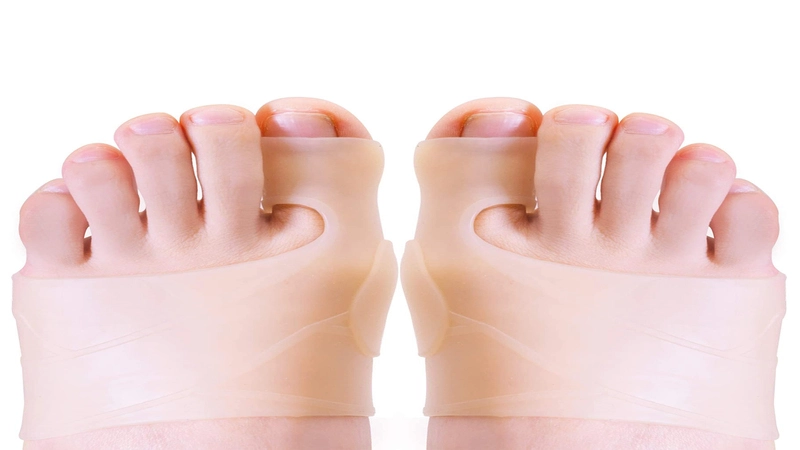
One of the most common ways to treat hallux valgus is to use a device called a splint between the deviated big toe and the side toe, which places the big toe at the right angle. Most of you know hallux valgus splints by the name of seman pak.
All of you who have hallux valgus disease have probably used a hallux valgus splint at night to correct your big toe deviation before seeing a doctor for hallux valgus. But can a splint help to treat hallux valgus? The short answer is: no!
While it is claimed that splints can be effective in correcting bunions, relieving pressure on the toe, and reducing pain, the truth is that bunions are made of hard bony tissue, and splints are not permanent cure. Additionally, there is no scientific evidence that a hallux valgus splint effectively treats this condition or corrects the big toe bone.
Instead of these splints, you can slow down the progression of this problem by wearing shoes that fit your foot size and toe condition. If these methods fail to fix your big toe deviation problem, the specialist doctor will offer you the option of surgery.
Bunion deformity surgery
Surgical treatments for bunions may be recommended if non-surgical treatments do not provide relief and you have trouble walking or have severe pain. Surgery can be used to restore the big toe to its original anatomical position. During bunion, the bones, ligaments, tendons and nerves will be returned to their original place, and the bump will disappear.
Many aberration correction procedures can be performed on the same day. The type of procedure used depends on your physical health, the extent of foot damage, your age, and the amount of activity you do. Recovery time depends on what procedures are done for you.
Read More: What Is Physiotherapy? Benefits and Applications
New methods of bunion deformity surgery

Surgical treatment of bunions often involves cutting the bones and reattaching them with metal pins. Many methods may be used to correct a bunion. Traditional hallux valgus surgery can be painful and require a lot of recovery time.
However, a new and minimally invasive method for the treatment of hallux valgus is being tested in the world. In this method, the tool for cutting the bone is changed and these cuts are made through the skin or small cuts in the leg, while deep and long cuts were used in traditional methods. In this way, fewer hard tissues such as skin and muscle are damaged, and less pain and swelling occurs in the leg area.
In addition, this method requires less recovery time, and the patient can immediately transfer his weight to the foot after the big toe surgery.
Of course, it should be noted that this method is not suitable for all patients. For example, if the deformation of your toe is severe or you have a history of big toe surgery or you have other deviations in your toes, you cannot use this method. The best thing to do is to consult a doctor specializing in hallux valgus and ask him for the best treatment method.
Bunion deformity in children
Even if hallux valgus is not a common injury in adolescents and children, when the first symptoms appear, it is necessary to treat it immediately because it causes pain and serious functional changes. Surgical treatment of bunions has evolved over the years and has become more invasive. But for children, one should try to use minimally invasive and non-surgical methods.
Read More: Haglund’s Deformity; How To Diagnose and Treat It
The cost of bunion deformity surgery
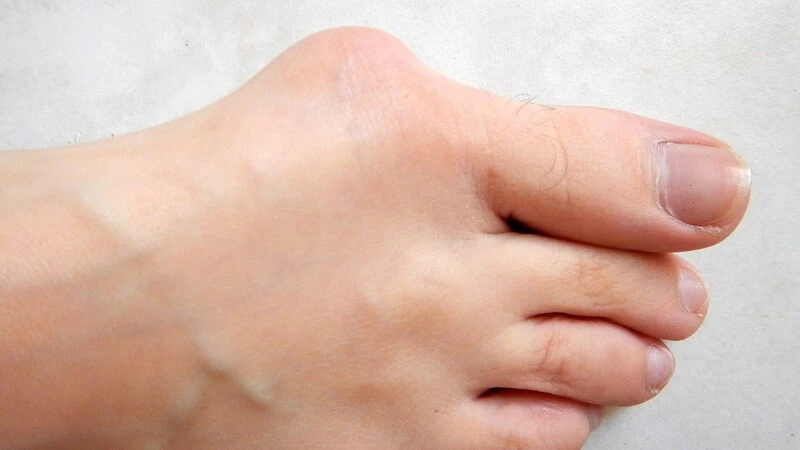
The cost of treatment for big toe deviation depends on whether one foot or two feet needs surgery, your type of health insurance, the hospital where the operation is performed, and the doctor. Therefore, before the big toe surgery, you should ask your doctor about these things, but this procedure is generally not expensive.
Complications of hallux valgus surgery
Hallux valgus surgery is very common and very successful in most cases. Some risks and complications associated with corrective surgery for big toe deviation include the following:
Infection
Infection is a side effect of any surgery; your surgeon will usually prescribe antibiotics. You need stronger and different antibiotics if you have a more severe infection. Infection often occurs in the skin or under the scar. However, this infection can quickly reach the bone and lead to stomatitis. Diabetics and smokers are more susceptible to infection.
Toe reshaping
After a few months, you may notice your bunion bone growing back. This problem is not always preventable and may require surgery to deviate the big toe again. Sometimes the deformity cannot be corrected and results in a bunion.
Bone problems
Avascular necrosis of the metatarsal head: If the blood flow to one part of your bone stops, that bone will die. This complication is rare, but it is always mentioned since it is very serious. Avascular necrosis is identified on subsequent radiographic examinations and may require pre-surgery to remove dead bone tissue.
Read More: What Is a Ligament? Types of Ligaments and the Causes of Their Injury
Problems with surgical equipment
Pins and pellets used in orthopedic surgeries can cause problems. These problems are related to when these tools are loosened, but often the patient feels itching in the area between the soft tissue and the foreign body, which will be solved by cutting or moving this tool.
Also, some general complications that may occur after any surgery include the following:
- A blood clot in the legs and lungs
- Heart and lung problems
- Severe infection
- Bleeding
- Big toe stiffness
If you experience these symptoms, or if you have diabetes or any signs of infection, call your doctor right away.
Protection after bunion deformity surgery
When you are discharged from the hospital depends entirely on the condition of your leg dressing. For example, your foot may be in a cast or a special type of medical shoe.
The time to remove the stitches is usually 14 days after the bunion deformity surgery, but the foot must be kept firm and stable for 6 to 8 weeks. The dressing area should always be dry; even when taking a bath, you should avoid getting your feet wet.
Walking after hallux valgus surgery
Your doctor may ask you to use a cane or walker to walk for the first few days after surgery. As the wound heals more, you will be able to bear more weight on your leg. However, try not to walk too much for the first few weeks after surgery. You can usually drive a week after the surgery.
For the first few days after surgery, you should lie down and keep your leg elevated by placing a few pillows under it. You can use ice to reduce pain and swelling at the attending physician’s discretion. You will have some swelling in the thumb area for about six months after surgery. For a few months after removing all the dressings, try to wear comfortable shoes like sports shoes for a few months.
Read More: What Is a Tendon? Types of Tendons and the Causes of Their Damage
Exercise after the treatment of bunion
You will be taught special exercises to increase leg flexibility and strengthen leg muscles. Do them.
The medicines the doctor prescribes for you after the surgery include using antibiotics for a few days to prevent infection at the surgical site and using painkillers. Use them.
Frequently Asked Questions
Now that you know all about bunion deformities, it’s time to address the most frequently asked questions about this condition.
Can you reverse hallux valgus?
Once hallux valgus is established, it cannot be reversed. The doctor must then decide which type of treatment is appropriate – depending on how severe the forefoot deformity has become.
Is hallux valgus surgery painful?
Hallux valgus surgery is one of the treatment options for patients with pain. However, some degree of residual pain can occur in some patients after surgery despite normal clinical findings.
Can you repair bunions without surgery?
In most cases, bunions can be treated non-surgically. A podiatrist from our team can examine your bunions and recommend conservative treatment that includes one or more of the following: Custom shoe orthoses (inserts) that reduce pressure on the joint and regulate your weight more beneficially.
What is the most common cause of hallux varus deformity?
Hallux varus may be caused by a congenital deformity, a short or stiff tendon, or trauma to the big toe. However, the most common cause is bunion surgery, that overcorrects the problem. To diagnose hallux varus, your doctor will take a medical history and also perform a thorough examination of your foot.


